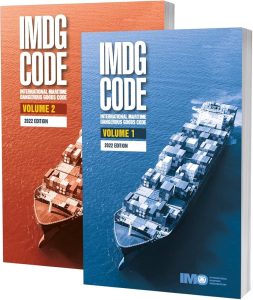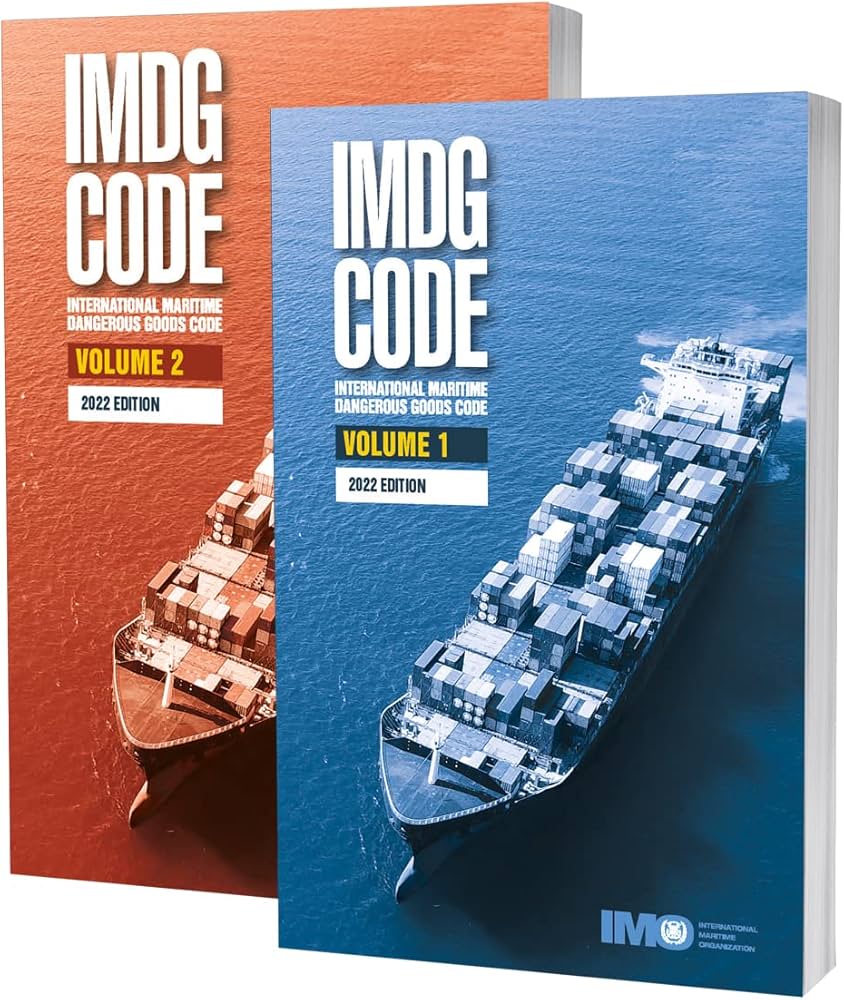The carriage of dangerous goods by sea is a critical aspect of international maritime trade. With the global economy heavily reliant on maritime transport, the safe and efficient handling of hazardous materials is paramount. The International Maritime Dangerous Goods (IMDG) Code plays a vital role in ensuring the safety of ships, their crew, the environment, and the general public. This article provides a detailed examination of the carriage of dangerous goods by ships, with a particular focus on the IMDG Code, its history, structure, and practical applications.
What Are Dangerous Goods?
Dangerous goods are substances or materials that pose a significant risk to health, safety, property, or the environment during transportation. These goods can include chemicals, explosives, flammable liquids, radioactive materials, toxic substances, and corrosives. The risks associated with transporting these goods by sea necessitate stringent regulations and protocols to prevent accidents, spills, and other potentially catastrophic incidents.
The IMDG Code: An Overview
The International Maritime Dangerous Goods (IMDG) Code is the primary regulatory framework governing the maritime transport of dangerous goods. Developed by the International Maritime Organization (IMO), the IMDG Code was first adopted in 1965 and has since undergone numerous revisions to keep pace with evolving industry standards and technological advancements.
The IMDG Code is mandatory under the International Convention for the Safety of Life at Sea (SOLAS), 1974, and is globally recognized as the standard for shipping dangerous goods by sea. It provides guidelines on the classification, packing, marking, labeling, stowage, and segregation of dangerous goods to ensure their safe carriage.

History and Development of the IMDG Code
The need for international regulations governing the transport of dangerous goods by sea became evident after several high-profile maritime accidents in the early 20th century. The Titanic disaster in 1912, where hazardous materials played a role in the scale of the tragedy, highlighted the dangers associated with the carriage of such goods without adequate regulations.
In response, the IMO was established in 1948, and one of its earliest tasks was to develop a comprehensive code to address the safe transport of dangerous goods. The IMDG Code was introduced in 1965 and has been periodically updated to reflect new challenges and developments in the industry. These updates ensure that the Code remains relevant and effective in mitigating the risks associated with maritime transport.
Structure of the IMDG Code
The IMDG Code is structured into two main volumes and a supplement:
- Volume 1 covers general provisions, definitions, and training requirements. It includes guidelines on classification, identification, packing, marking, labeling, placarding, and documentation. This volume also provides detailed information on emergency procedures, security provisions, and stowage requirements.
- Volume 2 contains the Dangerous Goods List (DGL), which is an extensive list of all substances classified as dangerous goods. Each entry in the DGL provides essential information such as the UN number, proper shipping name, class or division, packaging group, and special provisions.
- The Supplement includes additional guidance on special cargoes, such as marine pollutants, and provides the Emergency Response Procedures for Ships Carrying Dangerous Goods (EmS), as well as the Medical First Aid Guide (MFAG).
Classification of Dangerous Goods
The IMDG Code classifies dangerous goods into nine classes based on their inherent hazards:
- Class 1: Explosives
- Class 2: Gases
- Class 3: Flammable Liquids
- Class 4: Flammable Solids, Substances Liable to Spontaneous Combustion, Substances Which, on Contact with Water, Emit Flammable Gases
- Class 5: Oxidizing Substances and Organic Peroxides
- Class 6: Toxic and Infectious Substances
- Class 7: Radioactive Material
- Class 8: Corrosives
- Class 9: Miscellaneous Dangerous Substances and Articles
Each class is further divided into divisions and packaging groups that indicate the level of risk and the appropriate safety measures required during transport.
Packaging and Marking Requirements
Proper packaging is crucial in the transport of dangerous goods to prevent leaks, spills, and other hazards. The IMDG Code specifies the types of packaging that must be used for each class of dangerous goods, including the material, strength, and testing requirements. Packaging must be durable, leakproof, and capable of withstanding the rigors of sea transport.
In addition to packaging, the IMDG Code mandates specific marking and labeling of dangerous goods. These markings include the UN number, proper shipping name, hazard class label, and other relevant information. Markings must be clearly visible and durable, ensuring that they remain legible throughout the entire journey.
Stowage and Segregation
The safe stowage of dangerous goods on board ships is a critical aspect of the IMDG Code. Proper stowage ensures that dangerous goods are placed in appropriate locations on the ship to minimize risks, such as fire, explosion, or chemical reactions. The IMDG Code provides detailed stowage plans and requirements for different types of dangerous goods.
Segregation is another key element of safe stowage. Certain dangerous goods must be kept separate from others to prevent dangerous interactions. For example, flammable liquids should not be stored near oxidizing agents, as this could lead to a fire or explosion. The IMDG Code includes segregation tables that specify which substances can and cannot be stored together.
Documentation and Training
Documentation is essential in the transport of dangerous goods by sea. The IMDG Code requires that all dangerous goods shipments be accompanied by a Dangerous Goods Declaration (DGD), which provides detailed information about the cargo, including its classification, packaging, and stowage instructions. The DGD must be accurate and complete to ensure that all parties involved in the transport process are fully informed.
Training is also a critical component of the IMDG Code. All personnel involved in the transport of dangerous goods, including shippers, packers, handlers, and crew members, must receive appropriate training. This training ensures that they understand the hazards associated with dangerous goods and are familiar with the procedures for handling them safely.
Emergency Response and the IMDG Code
Despite the best efforts to ensure safety, accidents can still occur. The IMDG Code includes provisions for emergency response, including the EmS and MFAG guides. These guides provide instructions for dealing with incidents involving dangerous goods, such as spills, fires, and exposures. The EmS guide covers shipboard emergencies, while the MFAG provides medical advice for treating injuries caused by dangerous goods.
The Role of Technology in Enhancing Compliance
Technology plays an increasingly important role in ensuring compliance with the IMDG Code. Digital tools and software applications are now available to assist in the classification, documentation, and stowage of dangerous goods. These tools help reduce human error, ensure accuracy, and streamline the compliance process.
For example, electronic databases can provide instant access to the Dangerous Goods List, stowage plans, and segregation tables. Automated systems can also generate the required documentation and labels, reducing the risk of errors and omissions. Furthermore, real-time tracking systems allow for the continuous monitoring of dangerous goods during transport, enabling quick response in the event of an incident.
Challenges and Future Directions
While the IMDG Code has significantly improved the safety of transporting dangerous goods by sea, challenges remain. The increasing complexity of global supply chains, the introduction of new hazardous materials, and the need for continuous updates to the Code are ongoing issues.
Additionally, the enforcement of the IMDG Code can vary between countries, leading to inconsistencies in safety practices. To address these challenges, the IMO continues to work with member states, industry stakeholders, and other international organizations to enhance the effectiveness of the IMDG Code.
Looking ahead, the future of dangerous goods transport by sea will likely involve further integration of technology, increased collaboration between regulatory bodies, and the continuous development of best practices to address emerging risks.
The carriage of dangerous goods by sea is a complex and high-risk activity that requires strict adherence to international regulations. The IMDG Code provides a comprehensive framework for ensuring the safe transport of hazardous materials, protecting the safety of ships, their crews, and the environment.
By following the guidelines set forth in the IMDG Code, shipping companies, port authorities, and maritime professionals can mitigate the risks associated with dangerous goods, contributing to the safe and efficient movement of global trade. As the maritime industry continues to evolve, the IMDG Code will remain an essential tool in safeguarding the seas from the dangers posed by hazardous cargo.

